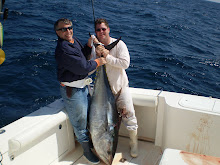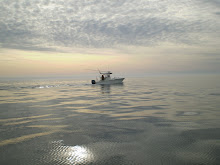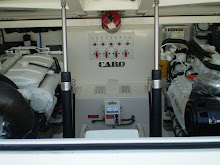 By Jim Field
By Jim FieldA few Saturday's ago (January 8), Andrew and I traveled to Dan's neck of the woods to hunt for Canadian geese and duck. For years Dan has talked about "The Farm" on Maryland's eastern shore, located about 15 minutes away from Dan's homestead in Bear, DE. Dan, Fran Sr., and a handful of hunting pals--including Jon Kitchen--lease The Farm, a 250+ acre rural tract, from a local land owner. Each year Dan has extended an open invitation to me to hunt--something I've never taken him up on before. However, with Andrew now 14 years and wanting to hunt (i.e., shoot weapons), an open weekend presented an opportunity, and north we drove.
Departing Alexandria at 4:00 am Saturday morning, we proceeded up 95N in snow squalls through Baltimore, across the Susquehanna River, and into DE to Dan's house. Once there, we donned camouflage hunting attire--courtesy of Dan's extra inventory--and hopped in his truck for the brief drive to The Farm. On the way, the scenery was quiet and beautiful: open cornfields, tree-lined boundaries, a dusting of newly-fallen snow. The country.
Having now seen The Farm, I can attest to its beauty and attractiveness to hunters. Rolling fields, trees, all spread out, with a large creek constituting the entire southwest border. Dan and group have built two blinds on the creek, and a single firing pit in the center of a large cornfield, with stalks remaining. This morning we were manning the pit: Jon, son Austin, and Tim Mazol (also a
Sea Ya Bea veteran) were on station in one of the blinds on the creek. We would also be joined in the pit by Travis, who I had never met before, and who turned out to be a great guy and outdoorsman, fun and knowledgeable at the same time--and an expert goose caller.
From the truck Dan shuttled Andrew, me, and the gear to the pit using his new 4-wheel toy (sorry, piece of essential equipment). We found the 30+ decoys snow-covered, and so spent time brush-cleaning and re-arranging the artificial flock (positioned face-first into the wind). Dan then instructed Andrew in firing a 12-gauge shotgun--the first time he would do this, or, to be more explicit, fire any gun above a 22 calibre. Dan set an empty cardboard coffee cup on a cornstalk at 20 paces and showed him how to site down the barrel. Andrew fired once: a hit. He fired twice: a second hit. That was that: ready to go.
We next entered the pit--perhaps 15 feet long, 4 feet wide, and 4 feet deep, and took our positions. Tied bundles of corn stalks were positioned overhead to serve as a roof, through which we would emerge--like jack-in-the-boxes--to fire at unsuspecting geese, assuming we could entice them into our field ad directly in front of us, within range.
As it turned out, the early snow had grounded the geese; when they started to fly, the activity centered in the field next to ours; it appeared that this would not be our day. That said, Travis worked the call constantly and we ended up attracting a small grouping, perhaps 10-15 birds. Dan, Andrew, and Travis stood up, got their bearings, choose their birds and fired. We got four, one of which was scored by Andrew.
By noon we were done and packing things up. It was one of the best mornings I'll ever have. Hunting with my son. His first experience with a bird gun, and exposure to the sport and the men who practice and carry on this way of living. Come on, does it get better?
As usual, Dan was a great host. Showing me, once again, something very special, passed down through families and friends, in the great outdoors. Andrew absolutely loved it--everything about it: the gear, the weapons, the surroundings, the companions, the pit conversation, and the kill. He wants to come back and "get really into it." We'll have to make this happen.
Dan begins instruction with Andrew The young man takes it all in
The young man takes it all in Ready, aim, fire....for the first time
Ready, aim, fire....for the first time In the pit--Andrew peers upward
In the pit--Andrew peers upward Travis and his caller
Travis and his caller Andrew and Dan discussing Greek philosophers
Andrew and Dan discussing Greek philosophers Andrew and his first goose
Andrew and his first goose  Retrieving kills from the field
Retrieving kills from the field Student, instructor, morning's bag, pit
Student, instructor, morning's bag, pit The two Fields
The two Fields
The essential piece of hunting gear--how cool!

(Thanks Dan--great time, man)

































































